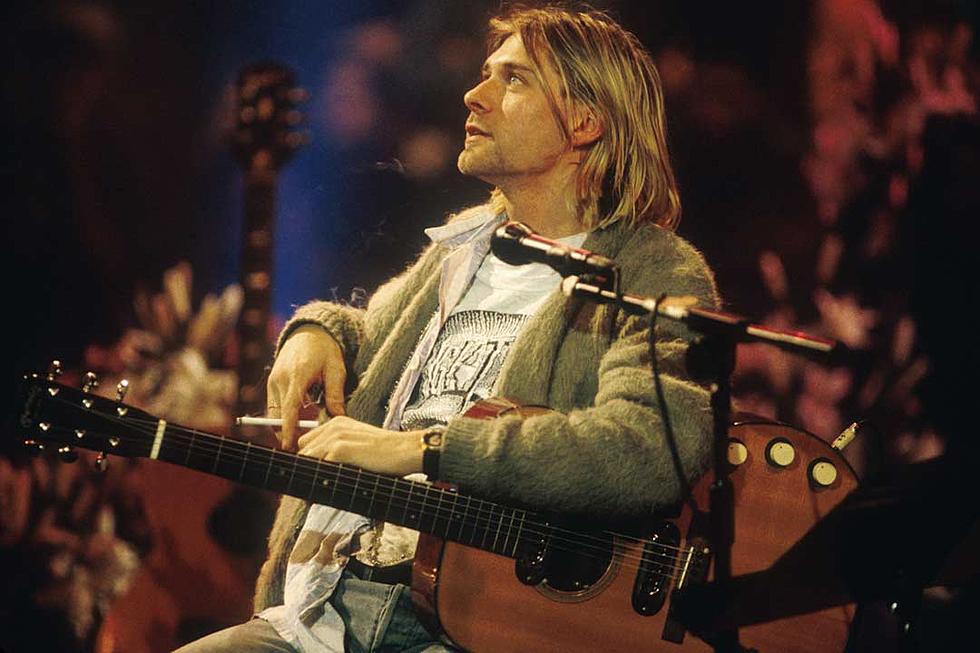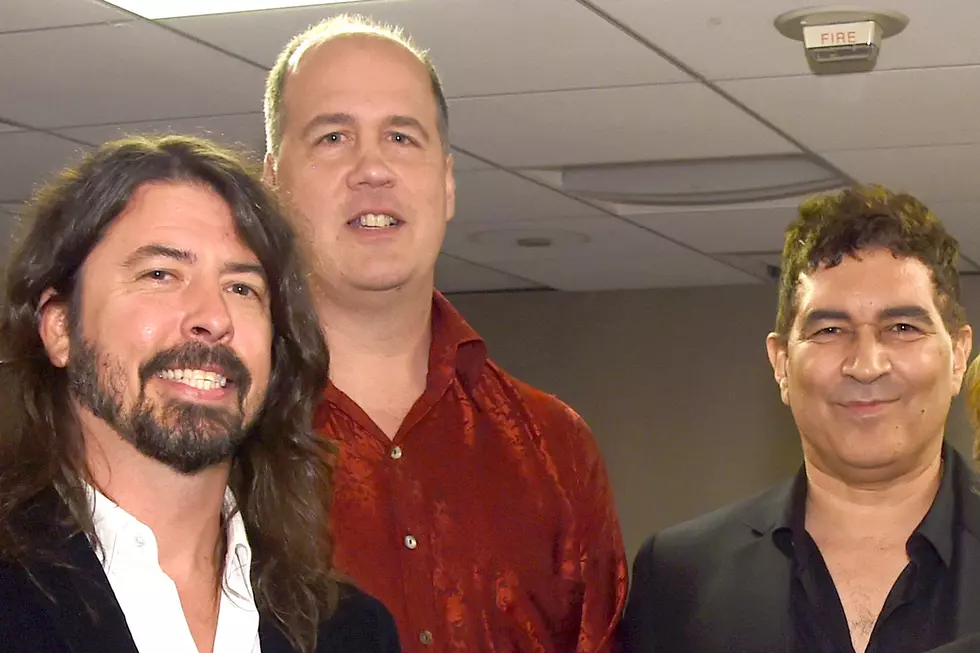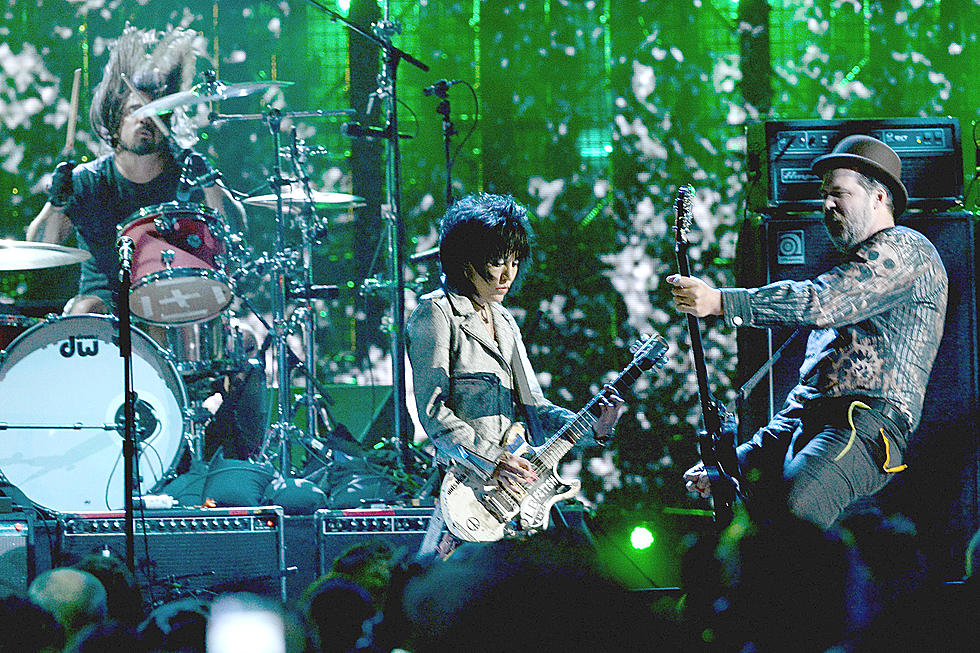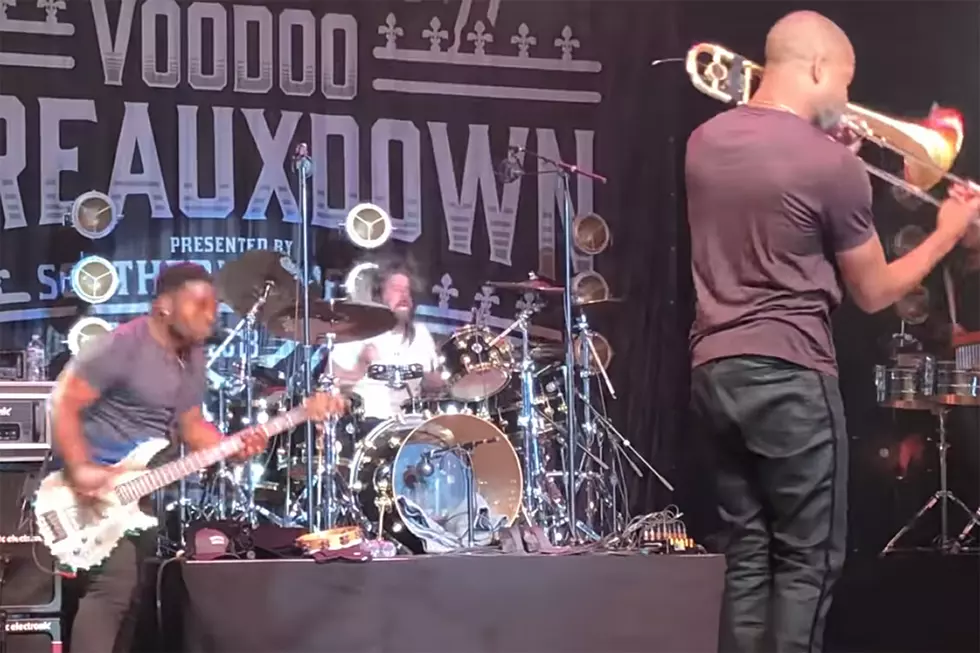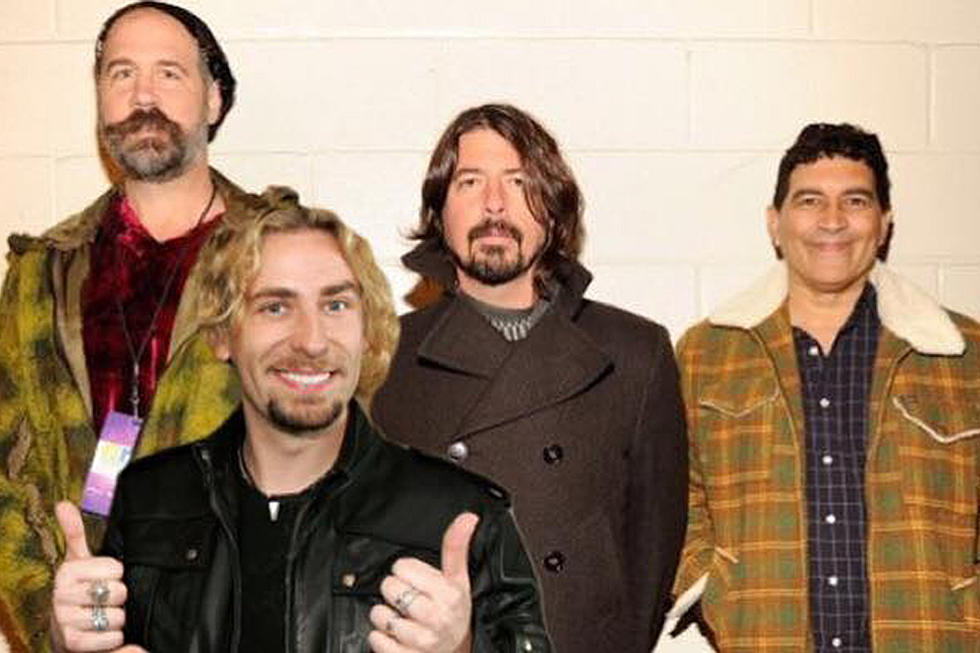
April 5, 1994: Kurt Cobain Dies at His Seattle Home
The events surrounding the death of Kurt Cobain have only become hazier with time. Authorities say the 27 year-old Nirvana leader is believed to have killed himself on April 5, 1994, while alone at his home in Seattle, while conspiracy theorists continue pointing to potential involvement by his wife, Courtney Love. But more than two decades later, one thing remains certain: On that day, the world lost a true rock legend and one of the definitive voices of our time.
While Cobain had been battling drug addiction and depression nearly as long as Nirvana were under the intense glare of a global spotlight, the singer's life took a tragic turn on March 31, 1994, when he climbed a six-foot fence and escaped L.A.’s Exodus Recovery Center. The day before, he’d checked himself in for drug detox and rehab after an intervention by family and friends. Cobain hopped a cab, boarded a plane and flew back to Seattle, while chatting with Guns N' Roses bassist Duff McKagan, who was reportedly seated next to him on the flight. Otherwise, Cobain managed to slip off the radar.
Although he was reportedly spotted in Seattle a few times during the days leading up to his death, Love said she was unaware of his whereabouts. To find him, she hired private investigator Tom Grant — who later became one of the key proponents of the murder-conspiracy theory implicating her. Grant recorded hours of conversations with Love, which would later fuel numerous books and documentaries, including the 2015 docu-drama Soaked In Bleach. But, back in 1994, Grant’s search for Cobain turned up empty.
It was only on April 8, when electrician Gary Smith was installing a security system at Cobain’s home, that the search ended. Smith found Cobain’s lifeless body in a guest house above the garage with a shotgun lying on his chest and a suicide note with a pen stuck through it, placed in a flower pot nearby. Smith said there was very little blood at the scene except for a small amount coming from Cobain’s ear, and initially he thought the Nirvana frontman was just asleep. Forensic experts later determined that Cobain had died three days prior, on April 5. They also found potentially lethal amounts of heroin and Valium in his system.
Upon hearing the news, the outpouring of grief from Cobain’s inner circle and fans everywhere, was understandably overwhelming. On April 10, some 7,000 mourners gathered at a park in the Seattle Center for a public vigil. Those in attendance heard pre-recorded messages by Nirvana bassist Krist Novoselic and Love, who read aloud portions of the suicide note. Later, Love arrived at the park to talk with fans and reportedly gave away articles of Cobain's clothes to some of those who still remained. In the days that followed, Love publicly mourned with fans standing vigil outside her home.
Love had Cobain’s body cremated, then stored his ashes in an urn and a teddy bear. Later, she had some of those ashes blessed by Buddhist monks and made into clay, which was shaped into memorial sculptures. Cobain’s mother arranged a final ceremony for her son on May 31, 1999 in his hometown of Olympia, Wash. where Cobain's only daughter, Frances Bean, scattered some of her father's ashes into McLane Creek as a Buddhist monk chanted.
Despite Cobain’s longstanding struggle with mental illness, drug addiction and health issues, suspicions continue to linger regarding Cobain’s death, with Love (who Cobain was purportedly divorcing at the time of his death) at the center of most theories. In the 1998 documentary Kurt & Courtney, Mentors frontman Eldon “El Duce” Hoke claimed Love offered him $50,000 to kill Cobain and hinted that he knew the killer’s identity. Hoke was killed shortly after the interview, when he was hit by a train.
Meanwhile, Grant has offered his own version of the events (along with his recordings of conversations with Love) to multiple researchers and media outlets over the years. His testimony was integral to the 1999 book, Who Killed Kurt Cobain?, and 2004’s Love and Death: The Murder of Kurt Cobain, as well as the 2015 docu-drama Soaked In Bleach. He continues to publicly state that Love arranged for Cobain’s murder and weaved a complex web of lies to derail the investigation into his death.
Among his assertions, Grant points to the amount of heroin discovered in Cobain’s body and said it might have been impossible for the musician to actually hold a shotgun and shoot himself with it. He also noted inconsistencies about where the gun was reportedly found and the spent shell casings at the scene. He also speculated that Love doctored the suicide note, taking an unrelated letter Cobain had written for another purpose, then adding the final paragraphs herself. According to Grant, Love's motive would have been money: The couple had signed a prenuptial agreement before their marriage in 1992, and Grant claims Love stood to lose millions if Cobain divorced her.
Still, many of Cobain’s closest friends and family, including Novoselic and Nirvana drummer Dave Grohl, have said they believe Cobain committed suicide. So does Cobain’s father, formerly a Washington State trooper, who declined to help reopen the case amid allegations of foul play.
Whatever the truth is, the legend of both Cobain and the mysterious circumstances of his death have been elevated to the level of postmodern folklore. At the beginning of 1994, Nirvana were already among the biggest bands on the planet, but the death of their iconic frontman immediately cemented their place in the annuls of rock.
In life, Cobain became a reluctant spokesperson for a generation; in death, he became a tragic figure synonymous with the likes of Jimi Hendrix and James Dean. Although Nirvana only released three albums and the 1993 compilation Incesticide while they were together, there have been three official live albums, three box sets and two official greatest hits compilations released in the two decades after Cobain's death. Perhaps the most significant is MTV Unplugged in New York, recorded in December 1993 and released seven months after Cobain died. It debuted at No. 1 on the Billboard 200 and later won a Grammy for Best Alternative Album. Featuring a raw and mostly unplanned performance by Nirvana, it captured Cobain at his most vulnerable and hinted at a future that could have touched an even broader audience than the parameters of grunge allowed.
Nirvana were later inducted into the Rock and Roll Hall of Fame during their first year of eligibility in 2014. Grohl and Novoselic were joined at the induction ceremony for a tribute to Cobain, which included Joan Jett, Lorde and Kim Gordon of Sonic Youth.
It's likely that we’ll never know exactly what happened in Cobain's home on April 5, 1994, but in the end, it hardly matters. All that matters now, is how we remember him, and our own personal connections to the precious few pieces of music he left behind.
Nirvana Albums Ranked in Order of Awesomeness
More From Diffuser.fm


